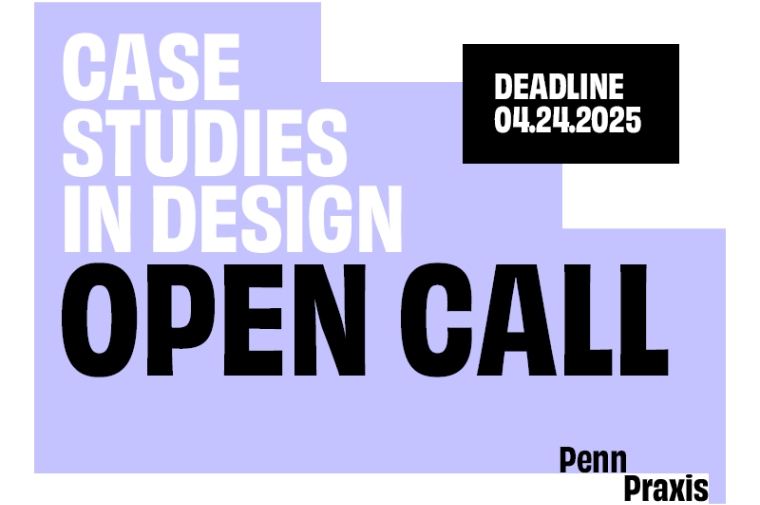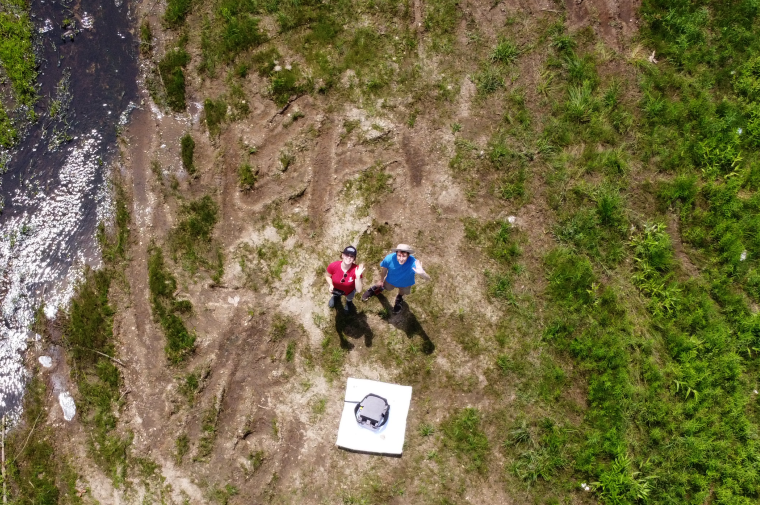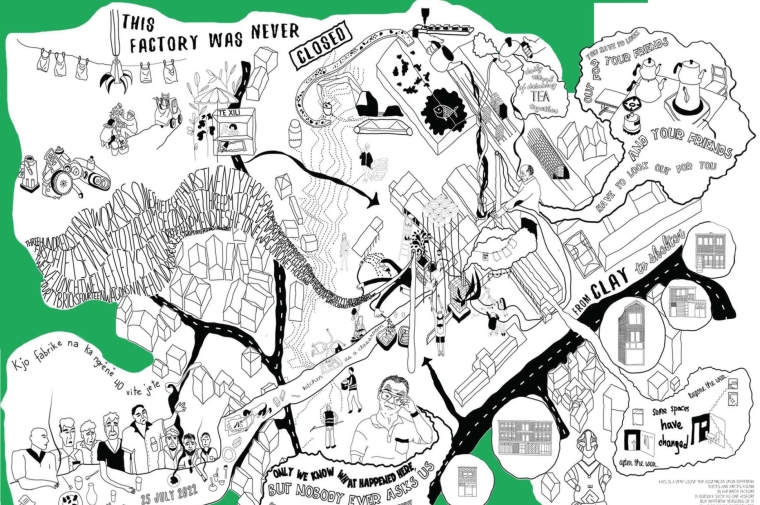August 11, 2015
Stuart Weitzman School of Design
102 Meyerson Hall
210 South 34th Street
Philadelphia, PA 19104
Get the latest Weitzman news in your Inbox
Areas
PHILADELPHIA— Work progresses on the five student-led Social Impact Projects initiated by the University of Pennsylvania School of Design. The five projects were awarded in December 2014, led by the PennDesign Dean’s Office together with PennPraxis—the outreach, practice and professional arm of the School. The Social Impact Projects are intended to foster more cross-disciplinary collaboration at the School, encourage students to work within the community, and leverage their design ability to benefit communities in need. The projects kicked off in the Spring of 2015, with the intention that they would be completed by the Fall of 2015. Several of the teams worked through the spring and summer to refine their proposals and gear up for a large event in the fall. Teams are working directly with community partners to determine the time and locations for installations that can augment ongoing community.
Students represent a wide perspective of disciplines of the School of Design, with the majority of groups comprised of students and faculty from more than one discipline. Their geographies of focus range from West Philadelphia, to Kensington, to South Philadelphia, including one project that is national in scope. Descriptions of each of each of these projects is listed below, including student collaborators and partners. More information will be shared as the projects progress!
An event is in the works to showcase the completed Social Impact Projects in the late Fall of 2015 at PennDesign. Stay tuned!
Restoring Buildings I Rebuilding Communities
Restoring Buildings, Rebuilding Communities is aimed at engaging residents of the Mill Creek and Belmont neighborhoods in West Philadelphia to demonstrate how simple repair techniques can restore the beauty and function of existing, historic rowhouses. Led by students in the Historic Preservation program, the project is partnering with Lombard Central Presbyterian Church at 4201 Powelton Avenue to host an event at during which repairs will be demonstrated that are directly applicable to similar conditions at adjacent residential properties. This project will show that old does not mean defunct and that aging buildings do not need to be demolished and replaced with new construction. In addition, the West Philadelphia Tool Library, and local construction professionals will lead demonstrations and be available to answer questions and provide long-term resources.
This day-long community event will be held on Saturday, September 12, 2015, from 9am to 4pm, including several demonstrations to help make buildings weather-tight and more energy-efficient. The event is free and open to the public. Demonstration stations will include masonry repointing, masonry cleaning, and wood window restoration. Local construction professionals will be on site to lead technical demonstrations and be available to answer questions and provide long-term resources to area residents.
The goal of the event is to empower homeowners to learn skills and techniques to apply to similar conditions at their homes, aiding in the preservation of a wonderful housing type particular to our city: the rowhouse. The event will demonstrate that targeted, sensitive repairs can extend the life of older buildings, and that the skills needed for such work are within reach of the average homeowner.
In addition to the Historic Preservation Department at the University of Pennsylvania, and the West Philadelphia Tool Library, the project is supported by the Fairmount Park Historic Preservation Trust.
Student Participants: Sang Bae (MSHP ’16); Josh Bevan (MSHP ’16); Charlette Caldwell (MSHP ’16); Andrew Cushing (MSHP ’16); Alice Gilmore (MSHP ’16); Julia Griffith (MSHP ’16, co-chair); AJ Habib (MUSA/HSPV ’15); Andrea Haley (MSHP ’16); Nate Hammitt (ARCH/MSHP ’15); Angelina Jones (MLA/MSHP ’16); Amy Lambert (MSHP ’16, co-chair); Sonja Lengel (MSHP ’16); Grace Meloy (MSHP ’16); Jess Neubelt (MCP/MSHP ’17); Adela Park (MLA ’15); Jenn Robinson (MSHP ’15); Maya Thomas (MSHP ’16); Casey Weisdock (MSHP ’16)
Faculty Advisor: Aaron Wunsch
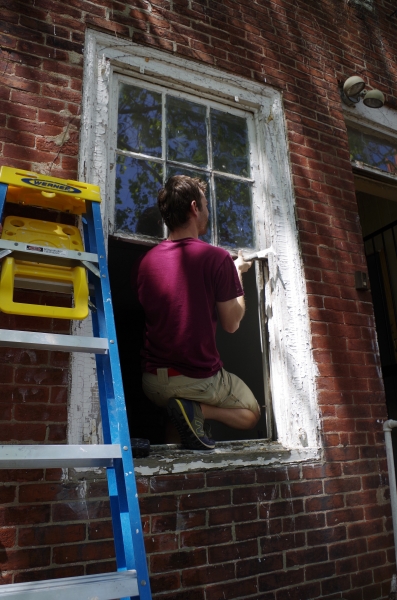
Caption: Andrew Cushing (HSPV ’16) removing sashes at Lombard Central Presbyterian Church
Credit: Amy Lambert
Pop Ups for a Purpose
The Pop Ups for Purpose team is designing and building a temporary art installation to promote and raise awareness for the recently developed Frankford Gateway Conceptual Plan created by the Community Design Collaborative (CDC) for the Kensington neighborhood of Philadelphia. The installation focuses on the Lehigh Viaduct on Frankford Avenue, envisioning a welcoming gateway that promotes a sense of identity and safety for the area by implementing a lighting, painting, and planting scheme. Currently, the area under the viaduct acts as a barrier between portions of Kensington, which the team hopes to bridge through this installation. Through this effort, the team hopes to help the community envision and experience components of the conceptual plan, building momentum for the plan and supporting residents’ vision.
The design for the installation is intended to echo the aesthetics and values of the Kensington community, using materials from within the neighborhood, and drawing on the community and its history for inspiration. The installation will feature lighting and planting, with elements to engage children with lighting and chalk games. The team’s coordination with the New Kensington Community Development Corporation (NKCDC) has ensured that the installation will engage with users in the neighborhood, and are consistent with the plan.
The installation will be on display and promoted in concert with a neighborhood Community Day on Saturday, September 12th, together with Somerset Neighbors for Better Living (SNBL), with the goal of drawing people to the space and getting additional input from residents on the vision. The installation will be paired with signage, wayfinding, and sculptural elements that will guide residents from the Community Day site to the viaduct underpass and highlight features of the site. Following the event, it is hoped that similar, more permanent amenities, will be funded for the area. NKCDC will continue to guide forward the implementation of the plan, working together with the community.
Student Participants: Emily Silber (MLA ’15); Nyasha Felder (MLA, M.ARCH. ’17); Kasey Short (MFA ’15)
Faculty Advisors: Lucinda Sanders, Matt Freedman
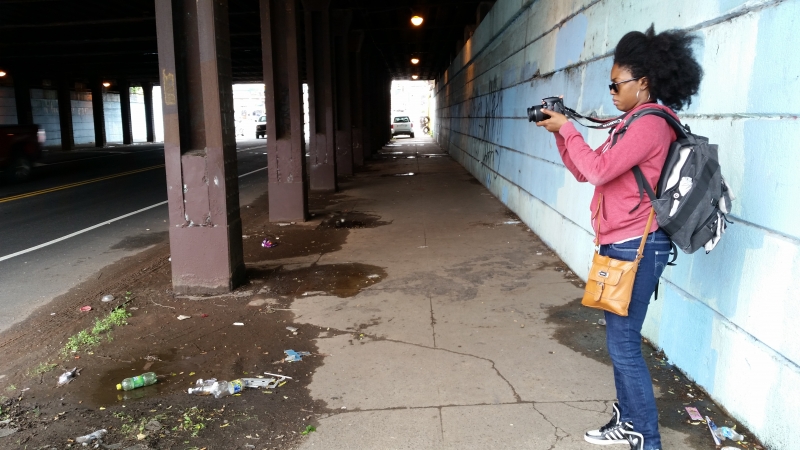
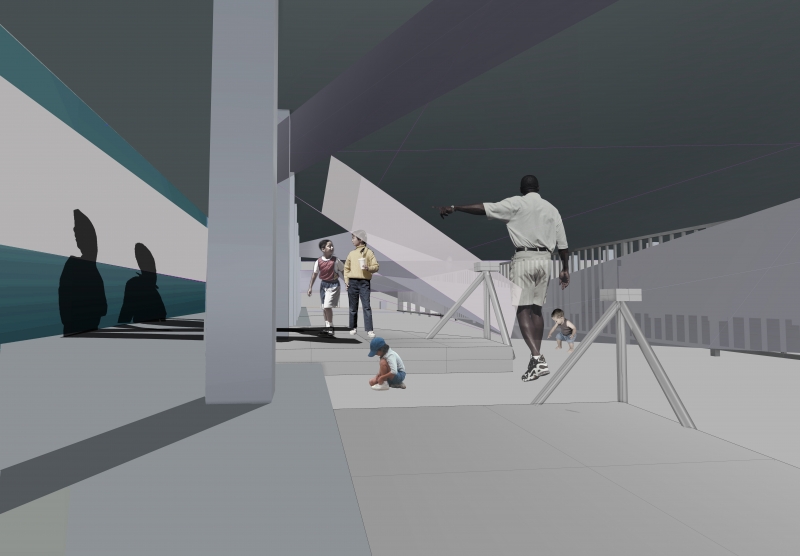 Captions: Frankford Avenue at Lehigh Underpass (top); View of art installation in underpass (bottom)
Captions: Frankford Avenue at Lehigh Underpass (top); View of art installation in underpass (bottom)
Credits: Emily Silber; Nyasha Felder
Designing Healthier Eating Experiences
The Designing Healthier Eating Experiences Project is conducted by a team of design students from the Integrated Product Design Program at Penn. It aims at encouraging children to eat a healthier and more balanced diet, by not only offering specially designed dining plates to school, but also actively engages elementary school and high school students in the process of designing and promoting new products addressing health eating habit. The project builds on designs for plates done in 2013 by the Integrated Product Design program, in partnership with the Agatston Urban Nutrition Initiative (AUNI) at the Netter Center for Community Partnerships at Penn.
Since the spring the project team has been negotiating with manufacturers and revising the design of the plates for better manufacturability. At the same time, the team was working on the branding of these plates and future products. The team have had two guided branding workshops with the crews from Rebel Ventures, including high school students from various West Philadelphia high schools. The ideas and drawings generated by the students during the workshop were later developed into brand names and logos candidates by the project team.
Currently, the project team is in the process of working with a manufacturer to produce 500 plates that will be completed during the summer of 2015. Once the plates are delivered, about half of them will be sent to Samuel Huey Elementary School in West Philadelphia for testing. Reviews and data will evaluate how the adoption of these new plates improves kids’ habits in healthy eating. Based on the outcome, the team will conduct several more workshops with more children to design potential new products. Simultaneously, the team will work with the high school students at Rebel Ventures to finalize the logos and branding ideas which they originated. Their feedbacks is going to help the project team arrive at the final brand for the plates. Finally, the project team will continue to work collaboratively with Rebel Ventures to push market and sell the plates in the future.
Student Participants: Yichen Huang (MSIPD ’16); Alicia Siman (MSIPD ’16); Aobo Zhou (MSIPD ’16)
Faculty Advisors: Sarah Rottenberg; Paul Rozin
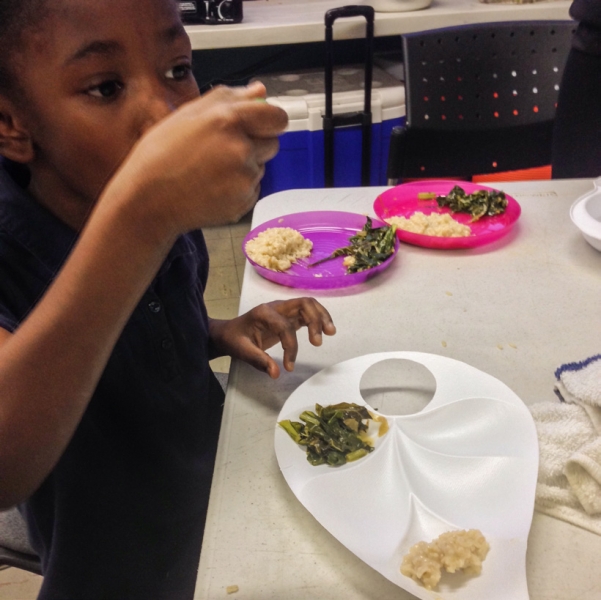
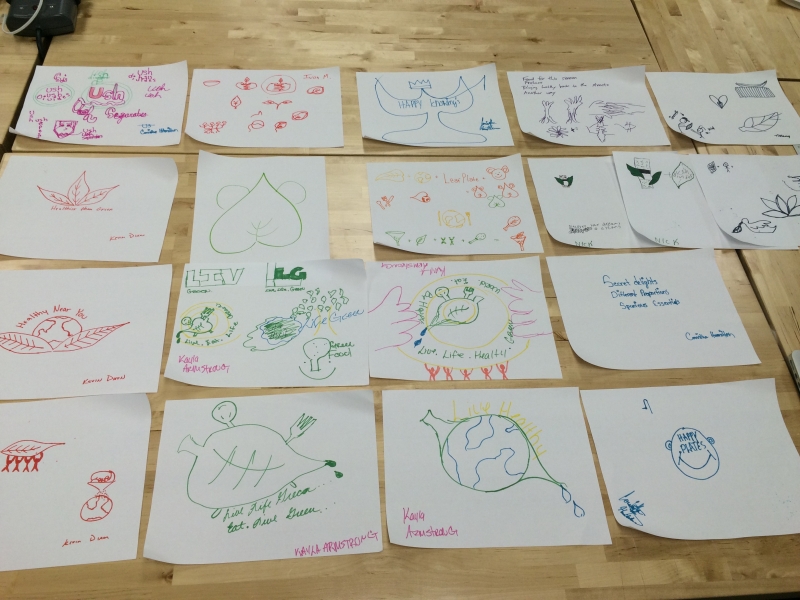
Caption: Student testing plates at Huey Elementary (top); Branding workshop outcome (bottom)
Proactive Practice
Proactive Practice examines cutting-edge social impact design firms to understand how innovations in business practice make their work possible. In the past two decades, designers have increasingly engaged projects serving social, economic, or environmental equity.
From building health infrastructure in the developing world, to designing new public spaces, to developing products that guarantee a social and economic return, designers today increasingly seek out projects with an explicit impact on underserved communities. While this shift has been covered widely in the design media, the business practices of social impact firms remain opaque.
It has only been in the past few years, however, that the culture of social entrepreneurship has influenced an emerging group of designers. These practices combine a social mission with a long-term, profitable business model. They do so by actively identifying and proposing project opportunities instead of simply responding to the market.
Proactive Practice is an ongoing research project that will examine a handful of these firms, understand how their business models allow them to shape their own opportunities to impact their communities, and detail how their financial and practice structure allows them to be financially sustainable while delivering on a social mission.
This project builds on the Scale / Scope symposium at Penn Design in Spring 2014, in which design students and practitioners shared how their methods allow them to impact systemic issues of wide relevance. Proactive Practice builds on and deepens this commitment by PennDesign to fostering a new generation of socially engaged designers.
Proactive Practice is a project of Nick McClintock (M.Arch/MLA ’16), Gilad Meron, and Mia Scharphie, with Daniel Barber acting as faculty advisor. With the research already under way, Proactive Practice will publish its findings online in early 2016.
Student Participants: Nick McClintock (M.Arch/ MLA ’16)
Faculty Advisor: Daniel Barber
Caption: Firm interview in process
Credit: Gilad Meron
Waste Not/Redux
The WASTE NOT/Redux project aims to develop sculptural installations using discarded construction materials, which will be repurposed back into communities in Philadelphia that are experiencing rapid growth and transformation. These installations intend to develop a public dialogue between designers, community members, and industry about waste and development in their respective neighborhoods, as well as give back to the community functional spaces and amenities to support their needs.
The project was conceptualized with the concern that rapid development occurring in Philadelphia and other cities results in the often-overlooked consequence of an enormous amount of material waste generated by demolition and construction. The construction industry generates nearly 40,000 tons of waste nationwide each year, the majority of which ends up in landfills. WASTE NOT/Redux aims to engage designers and community members in this discussion of how to repurpose some of this waste and heighten awareness of the waste, by working with established community groups to create installations constructed from waste materials to serve community needs. The student team is engaging with community groups in South Philadelphia to identify potential sites for installations, and working with them to create designs that will give back to the community in ways they can use. In addition to the neighborhood groups, the team is working with Revolution Recovery and Recycled Artists in Residency (RAIR) to gather materials for the project, and is coordinating with the City of Philadelphia’s Office of Arts, Culture and the Creative Economy to identify appropriate sites and partners.
Designers will exhibit installations that highlight and question the aesthetic appeal of discarded materials, while community partners will demonstrate how these materials can be repurposed back into functional use.
The project team intends to construct the installations in the fall of 2015, coordinating a day-long event to spark a dialogue surrounding development and waste reduction in neighborhoods of change. The dialogues hope to highlight the material and environmental cost of development, opportunities for reintegrating old materials into the communities’ changing fabric, and encouraging residents, designers, and industry leaders to respond to construction waste as the city moves forward.
Student Participants: Doug Breuer (M.Arch ’17); Clay Gruber (M.Arch ’17); Allison Koll (M.Arch/MLA ’18);
Faculty Advisors: Franca Trubiano; Ken Lum
Caption: Revolution Recovery
Credit: Clay Gruber

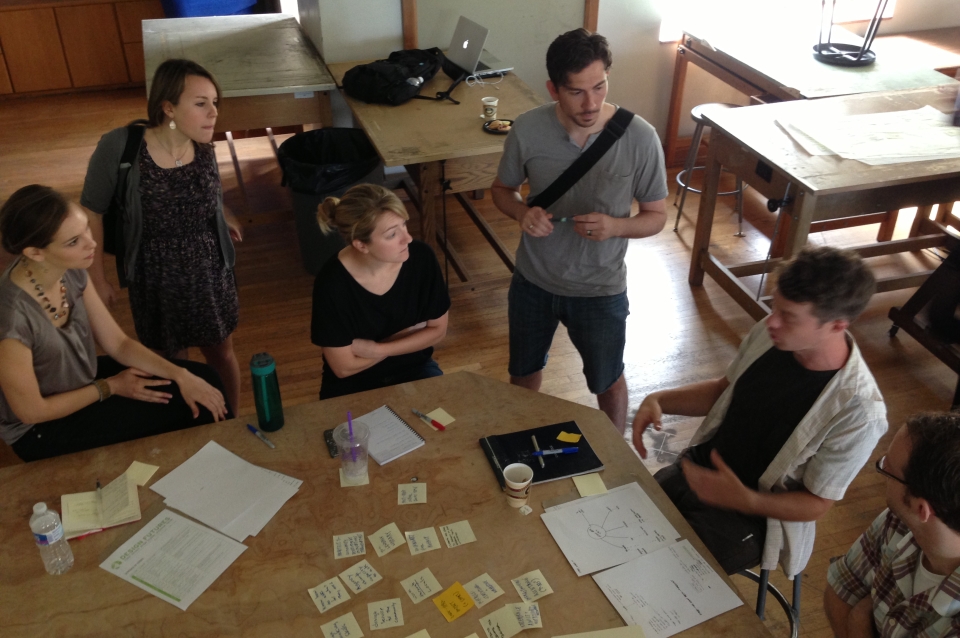
 Expand Image
Expand Image

